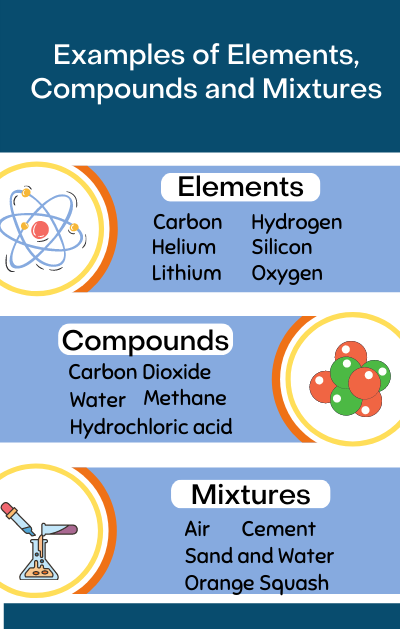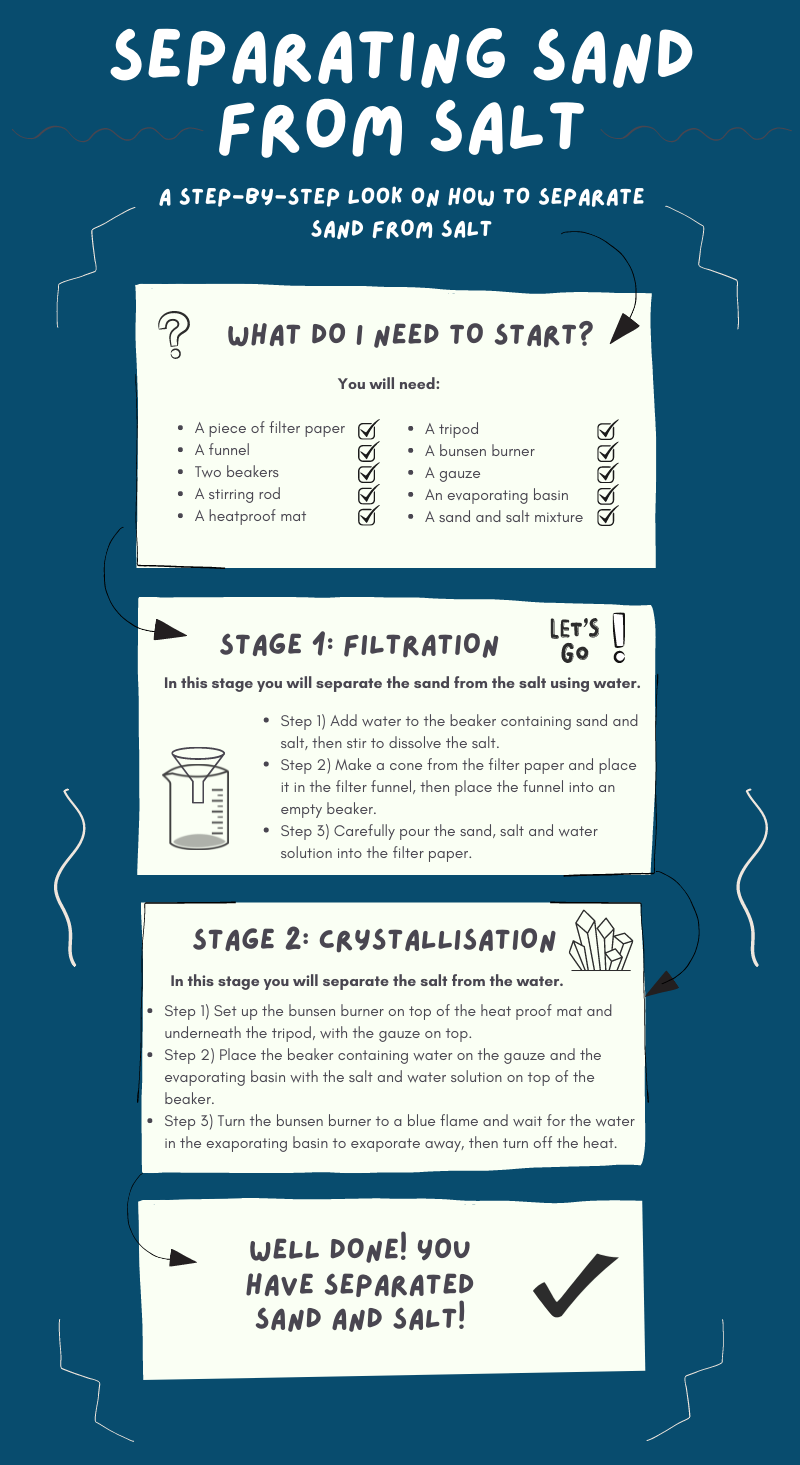When salt and sand have been mixed together in a beaker it is possible to separate the mixture using filtration, followed by crystallisation.
First, you will have to add water to the mixture and stir it to dissolve the water using a stirring rod. Then the salt will have dissolved and a piece of filter paper should be prepared and placed into a funnel. The funnel can then be placed into another beaker and the sand and salt solution should be carefully poured into the funnel.
The water and salt solution will slowly drain through the filter paper into the beaker. The sand will stay in the filter paper as it is insoluble and cannot fit through the holes in the paper. The sand is then known as the residue. The salt since it is soluble and dissolved in the water will go through the filter paper.
Now we have separated the sand from the salt, but now we need to separate the water from the salt. To do this we will use a different process, known as crystallisation.
It is possible to leave the beaker containing the salt and water solution until the water evaporates through evaporation. If we need the salt sooner we can use heat and boil away the water. We will need a heatproof mat, a bunsen burner, gauze, a tripod and an evaporating basin to do this.


